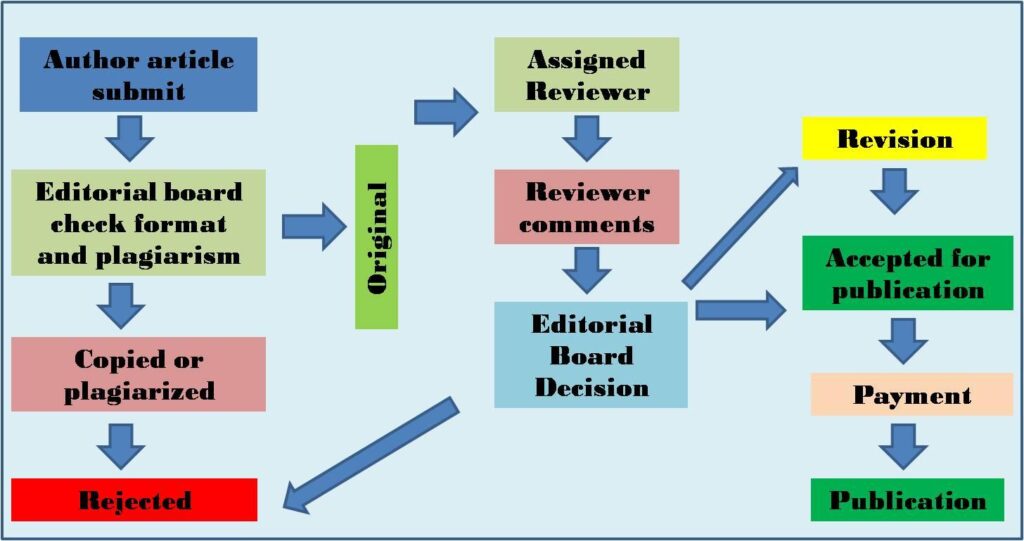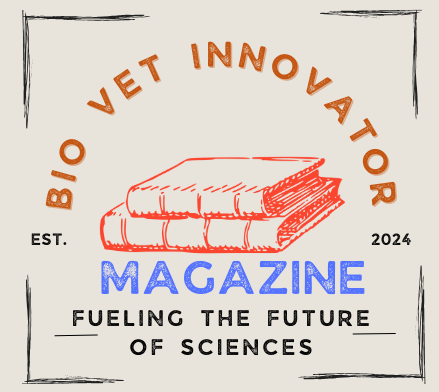Submission Procedure and Guidelines
The Bio Vet Innovator Magazine has Editorial Board, subject matter specialist editors, principal scientists and Research scholars of various research institutions as well as the senior professors from different universities of India. All the articles sent to us are reviewed by chief editor and subject matter specialist editors. If any article is not in proper format, or against our publishing guidelines, it will not be accepted by the editor-in-chief. If the editorial board believes that the article/paper needs improvement, then it is sent to team of subject specialist editors and reviewers for corrections. After proper screening and corrections, the articles are published in upcoming issue.
ARTICLE SUBMISSION & AUTHORS INSTRUCTIONS
Submit your article to biovetinnovator@gmail.com or through website portal.
Before submitting article, please go thorough author’s instruction and format your article in prescribed one.
Submission Guidelines for Authors:
The Bio Vet Innovator Magazine will be published monthly as Online Open Access Magazine on our official website www.biovetinnovator.in. Monthly issue would be published on 1st week of every month.

Submission Format:
- Articles must be sent in .doc or .docx MS-Word format to biovetinnovator@gmail.com
- Manuscripts must be free from plagiarism and are accepted on the condition that the work described is original and has not been published elsewhere.
Article Types for Bio Vet Innovator Magazine
Bio Vet Innovator Magazine accepts a variety of article types to ensure a broad dissemination of knowledge and innovations in the fields of veterinary, agricultural, and allied life sciences. Below are the types of articles we accept:
- Research Articles:
- Detailed reports of original research.
- Must include an introduction, methodology, results, and conclusions.
- Review Articles:
- Comprehensive reviews of current knowledge and developments in specific areas of interest.
- Should summarize the existing literature, identify gaps, and propose future directions.
- Popular Articles:
- Articles that communicate scientific concepts and innovations to a broader audience.
- Should be engaging and accessible, avoiding overly technical language.
- Case Reports:
- Detailed descriptions of unique cases encountered in veterinary or agricultural practice.
- Should offer valuable learning experiences and contribute to the existing body of knowledge.
- Success Stories and Case Studies:
- Narratives from start-ups and businesses in veterinary and agricultural sectors. o Should showcase journeys, innovations, and impacts, highlighting challenges and solutions.
Formatting Requirements:
- Text should be clear and formatted for A4 paper size, written in simple English.
- The article should include a summary, short introduction, complete methodology, results, and conclusions.
- Abbreviations should be written in full upon first use.
- Scientific names and technical nomenclature must be accurate.
- Tables, figures, and pictures should be relevant and appropriately placed with references.
Article Authorization:
All authors must sign an article authorization certificate describing their role in the article and taking responsibility for any disputes arising from the content.
Language:
- The magazine publishes articles in English and Hindi.
- English articles should be typed in Times New Roman font, size 12.
- Hindi articles should be typed in Kurtidev, Kokila, or Mangal font, size 12.
- Line spacing should be 1.5, with a 2.54 cm margin on all sides.
Article Layout:
- Title: Depict the theme of the manuscript, brief, specific, and informative (14 font, Bold).
- Authors: Names typed in sentence case (12 font).
- Authors’ Affiliation: Italics (12 font).
- Abstract
- Key Words
- Body of the Manuscript: Include subheadings as needed.
- Conclusion
- References
Abstract:
The abstract should be informative and self-explanatory, briefly presenting the topic, scope of the experiments, major findings, and conclusions, not exceeding 300 words.
Tables and Figures:
- Should be typed or generated by the author.
- Table numbers should be followed by the table title.
- Figures must be referenced in the text.
Reference Style:
- Author Surname, Initials, Year of publication. Title of Article. Title of Journal in italics. Volume Number (Issue Number): Page numbers.
- Example: Singh, V. and Sharma, R. (2017). Effect of nitrogen on maize yield and phenology. Indian Farmer. 12 (3): 5-7.
Note: Views expressed in the articles are authors own, publisher may not necessarily agreed with it.
Article Processing Fees:
Popular Article:
- Rs. 500 per article (up to 3 authors) *Additional charges may apply for each additional page and author (Rs. 50/each).
- Students (UG): Rs. 200 for single author (max. 2 pages) & Rs. 400 for multiple authors (up to 3 authors; max. 4 pages)
Review Article:
- Rs. 1000 per article (up to 4 authors)
Abstract:
- Rs. 300 per abstract (max. 1 page; up to 3 authors)
Success Story:
- Rs. 700 per article (max. 4 pages; up to 3 authors)
Case Study:
- Rs. 700 per article (max. 4 pages; up to 3 authors)
*Additional charges may apply for each additional page and author (Rs. 50/each).
Time to Publish
